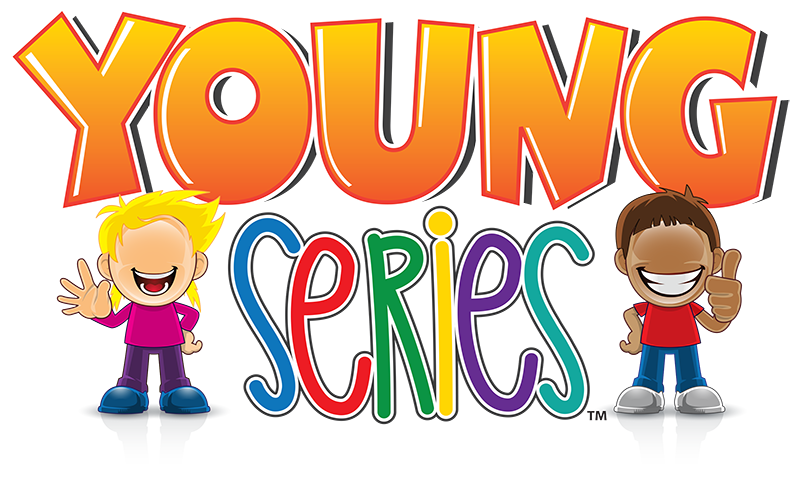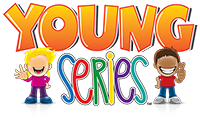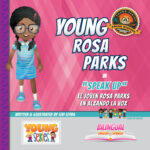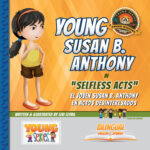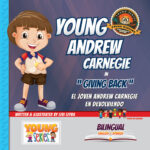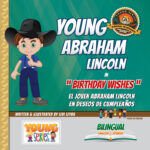In today’s multicultural and diverse world, many families are raising children in bilingual households. And there are many families who wish to become a bilingual household. While bilingualism offers numerous advantages, promoting family literacy becomes essential to ensure children develop strong language skills in both languages. By implementing effective strategies, parents can foster a love for reading and language learning, ultimately enhancing their children’s literacy abilities. In this article, I will explore six strategies for promoting family literacy in bilingual households and highlight the significant benefits of having bilingual children’s books at home.
6 Strategies for Promoting Family Literacy
- Create a Print-Rich Environment: One of the fundamental strategies for promoting family literacy in current or future bilingual households is to create a print-rich environment. Displaying books, magazines, newspapers, and other reading materials in both languages around the house exposes children and the family to written words and encourages curiosity. Having a designated reading area with comfortable seating and good lighting can further motivate reading habits and create a welcoming space for family reading time.
- Encourage Reading Aloud: Reading aloud is a powerful tool for language development and bonding in current or future bilingual households. Parents can take turns reading stories or books in each language, exposing children to different vocabulary, grammar structures, and cultural contexts. By hearing the sounds and rhythms of both languages, children and family can develop their oral language skills, enhance comprehension, and expand their vocabulary.
- Use Bilingual Children’s Books: Bilingual children’s books play a crucial role in promoting family literacy and language development. These books feature text in two languages, allowing the family to engage with both languages simultaneously. Bilingual books help children make connections between languages, reinforce vocabulary, and develop reading skills. They also foster a sense of cultural identity and appreciation for diverse languages and cultures.
- Incorporate Multilingual Activities: In addition to reading, incorporating multilingual activities can further enhance family literacy in bilingual households. Engaging in language-based games, such as word association or storytelling, where practice of using both languages is accomplished. Encourage children to write or draw in their preferred language and provide feedback to support their language development.
- Establish a Language Routine: Consistency is key when promoting family literacy in current or future bilingual households. Establish a language routine where each language has dedicated time and space. For example, designate specific days of the week for reading or speaking in one language and alternate between languages on a regular basis. Consistent exposure to both languages ensures children and family develop fluency and proficiency in both.
- Connect with Bilingual Community Resources: Families can benefit greatly from connecting with community resources that support language learning. Seek out local libraries, cultural centers, or bilingual story time events where children can experience storytelling and reading in both languages. These resources provide opportunities for children to interact with other bilingual families, fostering a sense of belonging and promoting a positive attitude towards language learning.
9 Benefits of Bilingual Children’s Books
Having bilingual children’s books at home offers numerous benefits to children growing up in bilingual households. Here are nine key advantages:
- Language Development: Bilingual children’s books expose children to rich vocabulary, sentence structures, and linguistic nuances in both languages. They provide an excellent platform for language development and improve reading skills in both languages.
- Cultural Appreciation: Bilingual books often showcase diverse cultural experiences, traditions, and stories from different parts of the world. By reading these books, children gain a deeper understanding and appreciation for their own culture and the cultures represented in the literature.
- Cognitive Flexibility: Research has shown that bilingual children often have enhanced cognitive abilities, including improved problem-solving skills and increased cognitive flexibility. Bilingual books contribute to these cognitive benefits by challenging children to switch between languages and adapt to different linguistic contexts.
- Family Bonding: Reading bilingual books together as a family fosters a sense of togetherness and strengthens the bond between parents and children. It provides a shared experience where family members can engage in discussions, ask questions, and explore different cultural perspectives presented in the books. This shared reading time creates lasting memories and reinforces the importance of literacy within the family.
- Improved Language Skills: Bilingual children’s books offer an immersive language experience, allowing children to practice both languages simultaneously. Exposure to diverse vocabulary, idiomatic expressions, and grammatical structures in both languages helps children expand their language skills and become more proficient in reading, writing, and speaking.
- Enhanced Reading Comprehension: Reading bilingual books exposes children to different text structures, styles, and storytelling techniques. They learn to navigate between two languages, develop comprehension strategies, and make connections between words and ideas. This enhances their overall reading comprehension skills, which are transferable to various academic subjects.
- Increased Confidence and Motivation: Bilingual children’s books provide children with the opportunity to see themselves reflected in literature, which boosts their self-confidence and motivates them to become lifelong readers. When children can relate to the characters, settings, and cultural elements in the books, it reinforces their sense of identity and validates their language learning abilities.
- Bridge Between Languages: Bilingual books serve as a bridge between languages, helping children transfer their literacy skills from one language to another. When children encounter familiar stories or themes in both languages, they can compare the languages, recognize patterns, and deepen their understanding of language structures.
- Preparation for Academic Success: Research has shown that bilingualism positively impacts cognitive abilities, academic achievement, and problem-solving skills. By providing bilingual children’s books at home, parents are equipping their children with the tools needed for success in a multilingual and global society. Strong literacy skills in both languages open doors to academic opportunities and future career prospects.
In conclusion, promoting family literacy in bilingual households is vital for nurturing children’s language development and fostering a love for reading. Creating a print-rich environment, reading aloud, using bilingual children’s books, incorporating multilingual activities, establishing language routines, and connecting with community resources are effective strategies to support family literacy.
In addition, bilingual children’s books offer a multitude of benefits, including language development, cultural appreciation, cognitive flexibility, family bonding, improved language skills, enhanced reading comprehension, increased confidence and motivation, a bridge between languages, and preparation for academic success. By implementing these strategies and incorporating bilingual books into the home, parents can provide a strong foundation for their children’s literacy and ensure they reap the lifelong rewards of bilingualism and literacy proficiency.
